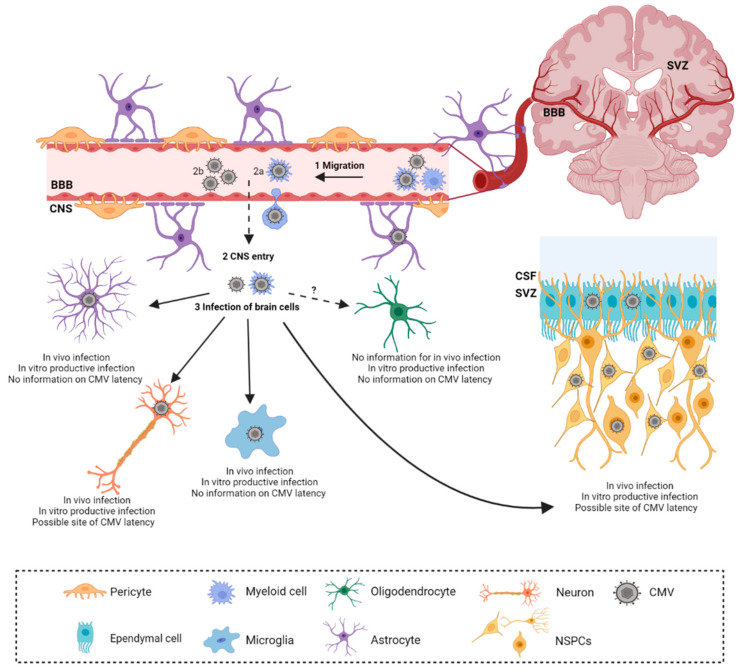Figure 1.
Cytomegalovirus infection in developing brain. Cytomegalovirus (CMV) dissemination to the central nervous system (CNS) is secondary to peripheral organ infection (1). Upon reaching the brain, CMV is hypothesized to cross the blood–brain barrier (BBB) by either cell-associated (2a) or cell-free form (2b). Monocytes are proposed to mediate cell-associated passage across the BBB. Upon crossing of the BBB, CMV infects resident cells (3). Apart from oligodendrocytes, CMV infection of resident CNS cells was confirmed in vivo. CMV DNA was detected in cerebrospinal fluid (CSF) of congenitally infected infants and neural stem precursor cells (NSPCs), abundant in subventricular zones (SVZ), are a prominent target of CMV infection. Figure was created with Biorender.

